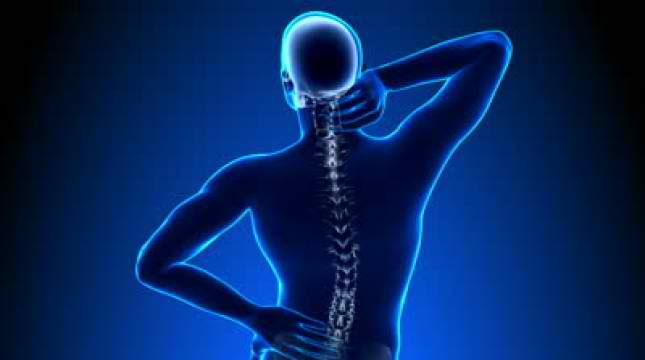As problems in our society multiply and financial instability still persists, the last thing we need is to miss a day of work because of illness. A lot of opportunities are missed if we are at home sick!
One of the most reported occupational disease among workers is back pain. Surveys show that in over 69 industry groups, back pain is prevalent in almost all groups and accounted for over 35 percent of the occupational diseases reported by workers.
The numbers show us that back pain is a condition that is very common and yet there is a general blasé attitude by those unaffected and even by those affected as well. Back pain is usually ignored or tolerated as an unavoidable part of “aging”. This should not be the case!
Anything that can keep us from doing our jobs well or enjoying life to the fullest should be addressed. If you are suffering from back pain or know someone who does, below are ten exercises that will give you some relief from your back pain.
Back Pain Exercises
Before you grab your exercise gear though, it is important to consult first with your physician. Another reminder of course is to pay attention to what your body is telling you. If it’s telling you to stop, then by all means stop!
1. Walking
Referred to some as the best form of exercise, walking is a good exercise for your back pain. It promotes healing by bringing oxygen to the soft tissues in your back. It is recommended that you start slow and short and then you can lengthen the session later on. You have to make sure though that you wear proper shoes and observe proper posture while doing the exercise or you may end up in worse pain than before.
2. Swimming
Another good aerobic exercise is swimming. This may actually be better than walking because the water will support your body so the impact on your back is lessened. Another plus is that in our tropical weather, an hour in the cool water could be very relaxing and will soothe our tired muscles. We should avoid using strokes though that will twist our back.
3. Yoga
Not all instances of back pain are caused physical factors. Psychological and emotional stresses often contribute greatly to the aches and pains we feel in our bodies. That is why yoga could be beneficial. It is not just a form of exercise but also a form of meditation. The poses done in yoga help control breathing and improve posture. It produces a calming effect which is often what is needed for our bodies to relax.
Some useful poses in yoga for back pain include the Sphinx, Pigeon, Thread the Needle and Legs up the Wall. These poses might be difficult to do at first but eventually your body will get the hang of it and the benefits of yoga will be yours to enjoy.
4. Partial crunches
Partial crunches strengthen the back and abdominal muscles. Proper form should be observed to avoid further injury to your back. Arms should be crossed over the chest or hands behind the neck. Then, raise shoulders off the floor and hold the position for a second. Feet, lower back and tailbone should touch the floor at all times. Repeat 8-12 times.
5. Wall Sit
Place yourself a foot or so from the wall and slowly lean backward until your back is flat on the wall. As the name suggests, lower yourself until you seem like you are sitting. Hold for 10 seconds and slide back up. Repeat 8-12 times.
6. Knee to chest
Lie flat on your back with knees bent and feet flat on the floor. Raise one knee toward the chest, keeping the other foot on the floor. Hold for 15-30 seconds, keeping sure the back is flat on the floor. Do the same for the other knee. Do 2-4 times for each leg. This exercise is good for keeping your core muscles flexible.
7. Lifting weights
This may seem shocking but this exercise is actually a good way to relieve chronic back pain if done properly. For acute back pain however, lifting weights might increase the risk of further injury. Also, avoid using weights with bending or twisting exercises. To ensure safety, it is better to ask your doctor whether doing so will be safe for you.
8. Using a Swiss Ball
A Swiss ball, also known as an exercise ball is a large, soft, air-filled ball used for, you guessed it, exercise. It is usually used for stretching and strengthening. It is not easy to use though and you might need training to be able to use it properly.
9. Tai chi
This traditional Chinese form of exercise is very useful for people with back and neck pain. Its key components are movement, breathing, and meditation. The slow and graceful movements improve the body’s alignment, posture, balance, flexibility, strength, coordination and stamina. The meditative state of mind involved in doing tai chi works similarly to yoga, meaning that the psychological and emotional stresses are also addressed. It also improves blood circulation which promotes healing. Since the movements are slow and deliberate, this is a low-impact exercise meaning it doesn’t jar the spine.
10. Pilates
Pilates is an exercise program developed by Joseph Pilates in the early 1900’s.It focuses on the core postural muscles to keep the body balanced and is essential for providing support for the spine. The program teaches awareness of neutral spine alignment and movement habits that may stress the spine. Initially meant for professional dancers, Pilates may seem challenging to a patient suffering from back pain but one can inform the instructor about his condition so that exercises that could aggravate the pain could be avoided.
Back pain is not something that should be treated lightly or ignored. Sure, we can rest in bed but too much rest might worsen the situation because there is no treatment involved. The exercises mentioned above may not completely cure back pain but it could allow you to at least enjoy what the world has to offer. Remember though that it is best to consult your doctor if a particular exercise is advisable for you. What may be safe for me might not be safe for you.
- READ MORE




